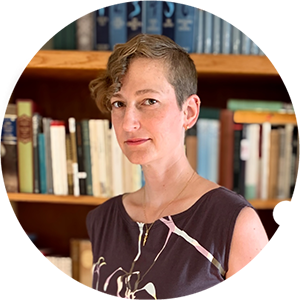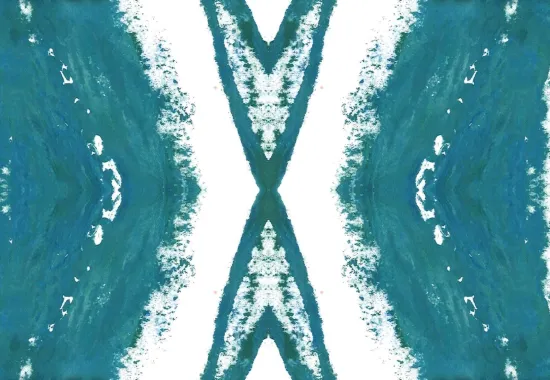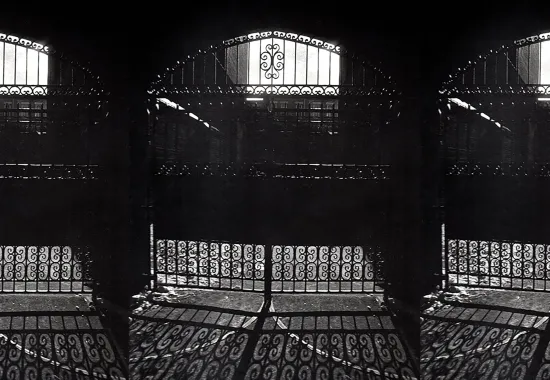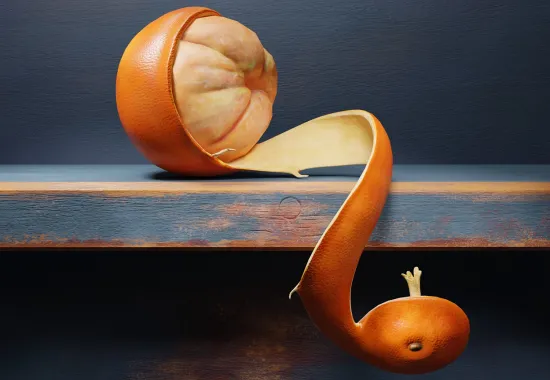A Review of Monsters We Have Made by Lindsay Starck
A crime that touches taboo can fascinate, or it can cause us to turn away, closing off the possibility such a thing could happen to us. When a child commits a felony—as when, a decade ago, two young girls stabbed another child at the behest of a monster they read about online—many of us have the choice to move on with our lives. Others, like the children’s parents, do not. But what happens when our family becomes the next headline? How do we prepare for the inevitable moments our monsters come to life?
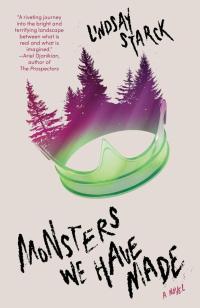 Fiction is one way to interact with crimes that offend our deepest sensibilities. Through story we enter our fantasies and confront our fears, without the dread of consequence. With her novel Monsters We Have Made, Lindsay Starck explores tragedies like the 2014 Slender Man stabbing, and in doing so, opens safe passage for readers to engage with the monsters of our collective imagination.
Fiction is one way to interact with crimes that offend our deepest sensibilities. Through story we enter our fantasies and confront our fears, without the dread of consequence. With her novel Monsters We Have Made, Lindsay Starck explores tragedies like the 2014 Slender Man stabbing, and in doing so, opens safe passage for readers to engage with the monsters of our collective imagination.
Starck’s monster is the Kingman, a crowned and cloaked figure who haunts the North Shore of Lake Superior from dark corners of the Internet. The Kingman comes into power when two nine-year-old girls in North Carolina, Faye and Anna, believing it’s his will, stab a babysitter into critical condition using woodcutting knives from their elementary school art room.
The novel is divided into three sections, with documentary interviews, news reports, and court records interspersed throughout the first. As the book takes place ten years after the crime—when Faye and Anna have been released and Faye has a daughter of her own—this catalog fills in the backstory. The author shows her versatility in these interstitial passages, branching out from narrative into unexpected, poetic forms that allow the reader to enter the story.
An excerpt from the memoirs of the presiding judge, for example, reflects on the close relationship between violence and love, history and myth, and about how, in childhood, the world is more porous. In a transcript from a podcast about the Kingman, a host muses: “legends and fairy tales—they’re spaces of possibility…we so often associate the tales with children: because young people…haven’t yet lost this sense of wonder, thrill, seduction.”
These interludes open the probability of children falling for a fable, even as the adults around them begin to waiver as well. Faye’s mother glimpses something lurking at the edge of vision, in a window’s reflection. “The more I read about the Kingman,” Sylvia confesses, “the more real he became.” The bailiff on Faye’s case describes how, after hours of court testimony, the monster got to his head. “Keep your guard up,” he warns his interlocutor, “some things don’t need to be real to destroy you.”
When the book begins, Faye has disappeared, leaving her daughter behind. Her parents, worried she’s caught up in a recent spree of Kingman crimes, track their daughter and a professor of folklore to the Northwoods of Minnesota, where the monster is said to reside on an island long since disappeared from maps of Lake Superior. The setting comes alive through lyrical descriptions of the Great Lake’s surface and the changeable sky it reflects—across which flicker the magnetic flames of the northern lights.
Through feats of characterization, creative forms, and mesmerizing language, the author moves the reader out of judgment and into empathy. It is one thing to see a perpetrator as human, to become interested in her. Faye’s initial appearance at an interrogation is captivating. She is sure of herself, clear-eyed, if not with innocence, then with something like clairvoyance. The initial horror of her deed fades into a curiosity that compels the reader beyond the crime. We learn Faye is driven by instinct, “even though history had taught her not to trust herself.”
It’s another thing to see the accused through her mother’s eyes, to feel the compassion of a father, of a friend. Each chapter shifts perspective, creating a prismatic view of its central character. Through her father’s memories, Faye becomes a child again. Jack remembers “trips to the library with Faye so that she could find bird-watching books…The sound of trilling and whistling…as she practiced mimicking the robin, the jay, the chickadee, the loon.” Anna recalls Faye “twisting daisies into crowns…her mass of uncombed hair like a black galaxy, studded with forget-me-nots instead of stars,” and determines to help find her. “She turned her face to what she thought might be north. A lighthouse, a castle, a promise, a friend.”
Faye is most clearly seen in Sylvia’s chapters. “Where could this wondrous, glowing stranger have possibly come from? How is her face so like mine?” Sylvia asks in agony over her daughter’s estrangement. Through her, the book interrogates parenthood: citing the facts that can rise up against the decision to have a child, only to be bowled over by want, followed by the question of regret. What happens when what you get is not what you expect? Or, as one character queries: “After everything that’s happened—are you happy that you had your daughter?”
In the book’s final section, Sylvia’s imaginative capacity expands, extending itself to the reader, asking us to see her daughter through it: “she could be frightened, cold, ecstatic, ravenous.” She reminds us: “it doesn’t take a Kingman to make a person disappear,” and in her words hover the circumstances that conspired to make a crime, one which belongs as much to society as it does to the person who committed it, and to the tales we have told them. Sylvia’s passion for Faye fuels the novel’s forward progression, as the prose, retaining its grace, picks up pace. The Minnesota landscape comes alive, alight with the aurora borealis gleaming over lake.
It is a third thing to believe, if only for a moment, the fictions Faye fell for, and, through that slip, to understand how a story might become real enough to impact a life, to take a life. Midway through the book, the chapter breaks are filled not with evidence of a crime, but with a chronicle of the Kingman through human history. Excerpts from the professor’s research reveal a mysterious figure skulking through stories the reader recognizes—the Pied Piper, Antony and Cleopatra, the Lindbergh child—making the monster’s presence palpable, even probable. And just like that, the Kingman is there, present in our past. Such is the power of good prose; such is the sovereignty of the human imagination.
After all, as Sylvia’s sister explains, it only takes two—be it Faye and Anna, or author and reader—to create what the French call folie à deux, a shared delusion: “The more voices that lay claim to a fiction, the more likely it seems to be real.” Here lies this novel’s significance to our present moment, in which an internet has become our legend and lore, a place where conspiracy theories rage, monsters lurk, and children roam. Maybe it’s true, as Sylvia acknowledges, that “the Kingman had always been with us.” But sometimes it takes a good story to see what was there all along.



